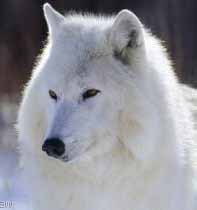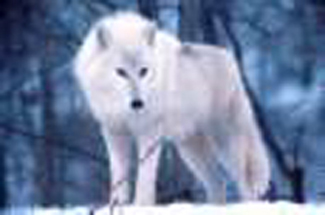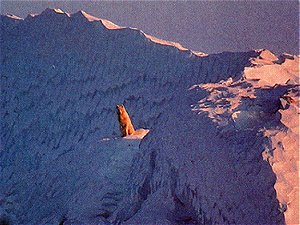Arctic Wolves

Arctic Wolves are one of the most beautiful wolves to ever be seen. They have a lush white coat, a very proud, confident look about their face, and everything about them seems mystical. They live mainly in the northern regions of Canada, and they origanated from Greenland. Arctic wolves can live for five weeks without food or a source of light. They can also survive in subzero temperatures, which in my opinion makes them some of the toughest animals on earth.

There is very little information about the arctic wolf because of the area that they inhabit. We do know that they live in small packs or families, and they continue to move around throught the fall and winter seasons. Later in the spring, often after "March Mating", the pregnant female leaves the rest of the group so that she can dig a small den to keep warm so that she can give birth to five or six pups. Since the ground is often still frozen over from the harsh winter months, the female often has to search out an old cave or den.

Arctic wolves eat arctic hares and lemmings, but their most substanial source of food is musk oxen or caribou. They often roam around for several days to find food because of the scarcity in the frigid conditions. When they are looking for large prey, they hunt in large packs, mostly because the animals are too powerful for one wolf, and also, because of the flat plains, it is terribly hard to make a suprise attack, and so the herd of oxen or caribou have time to arrange themselves so that the calves are in the middle making it less likely for them to be attacked. The wolves surround the herd, slowly circling hoping to make them scatter, then the wolves begin chasing them, especially staying close to the young or weak. An ox will provide food for a pack for about a week because the wolves eat every bit of the animal. they eat the bones, fur, intestens, and the meat.
Arctic Wolves
Highth: 25-31 inches tall
Length: 3-4 feet long from nose to tail
Color: White, Gray, Red, or Black
Weight: 160-175 pounds
Lifespan: In the wild- 7 years; In captivity- 17 years
